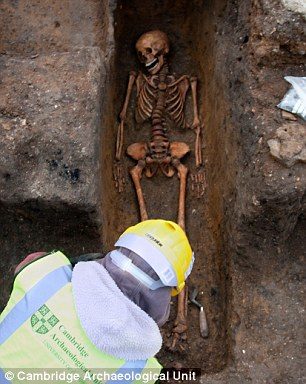
The newly discovered skeletons were found in the university's New Museums site.
More than 25 skeletons have been discovered in the centre of the Cambridge University campus, and archaeologists expect to discover dozens or more in the coming weeks.
The remains date back to a friary, based in the area between 1290 and 1538. Despite being nearly 450 years old, the Medieval skeletons are in good condition, the archaeologists said.
The archaeology project started with the discovery of around 400 skeletons in 2010 at a burial site nearby. Containing about 1,300 burials, including about 400 complete skeletons, it was found as part of the refurbishment of a Victorian building.
The newly discovered skeletons were found in the university's New Museums site, which contains the David Attenborough building and the Museum of Zoology, and is set to undergo a major renovation, the
BBC reported.
Additional images
The researchers have discovered several large buildings that formed part of the friary cloisters, including the well preserved remains of the chapter house.
During medieval times, founders of friaries would 'set up their friary and mark off an area as a cemetery and they start burying people in nice neat rows'.
Discoveries of fine architectural stonework, window glass, decorated floor tiles and ornate roof tiles all demonstrate the high quality of the friary buildings.
Other finds include writing implements and book bindings that show the importance of literacy at the friary.
The team have also excavated in the region of thirty burials, preliminary observations indicate that these are all or mainly men and are likely to be the friars who lived at the site.
Some individuals were probably as young as around ten years old, indicating they were probably novices.
Many of the burials were accompanied by buckles, indicating the friars were buried with their black leather belts, a distinctive element of Augustinian dress.
Some were even made from skeletal remains that appear to be made of elephant ivory.
'Eventually, after 100 or 150 years they fill up their area and they just start back at the beginning again and we know they did that at least three times,' he added, noting that the area has the potential for more surprises.
The Cambridge Archaeological Unit (CAU) plans to keep searching for the next four weeks, and expect to recover up to 40 skeletons.
Specialist osteo-archaeologists will process, wash and study the skeletons as part of a joint project undertaken by the CAU and the university's Department of Archaeology, called After the Plague.

Reader Comments
to our Newsletter